Ethical Decision Analysis: Exploring 'Picking Up the Slack' Dilemma
VerifiedAdded on 2023/06/04
|5
|924
|382
Essay
AI Summary
This essay provides a detailed analysis of the ethical dilemma presented in the 'Picking Up the Slack' case study, where Greg faces the challenge of evaluating a team member, Natalie, whose contribution is lacking. The essay explores various ethical approaches, including the utilitarian approach, the fairness of justice approach, the rights approach, and the virtue approach, to provide a comprehensive understanding of the ethical considerations involved. It delves into how these approaches can be applied to Greg's situation and presents a personal viewpoint on how the dilemma should be resolved, emphasizing the importance of fairness and virtue in decision-making. The essay concludes by highlighting the significance of ethical standards in guiding human behavior and ensuring fair outcomes in complex situations. Desklib provides a wealth of resources for students, including solved assignments and past papers, to aid in their academic endeavors.
1 out of 5
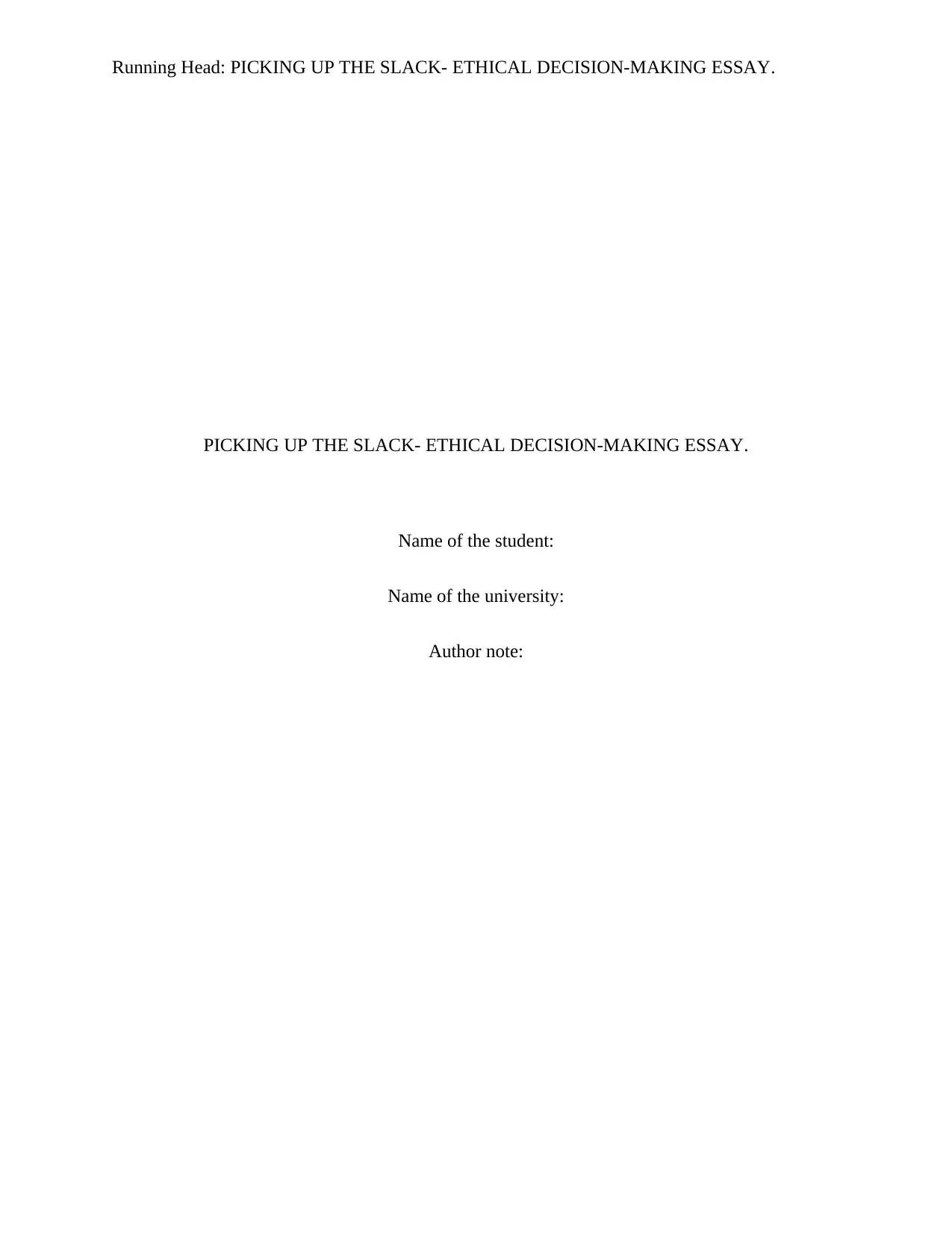
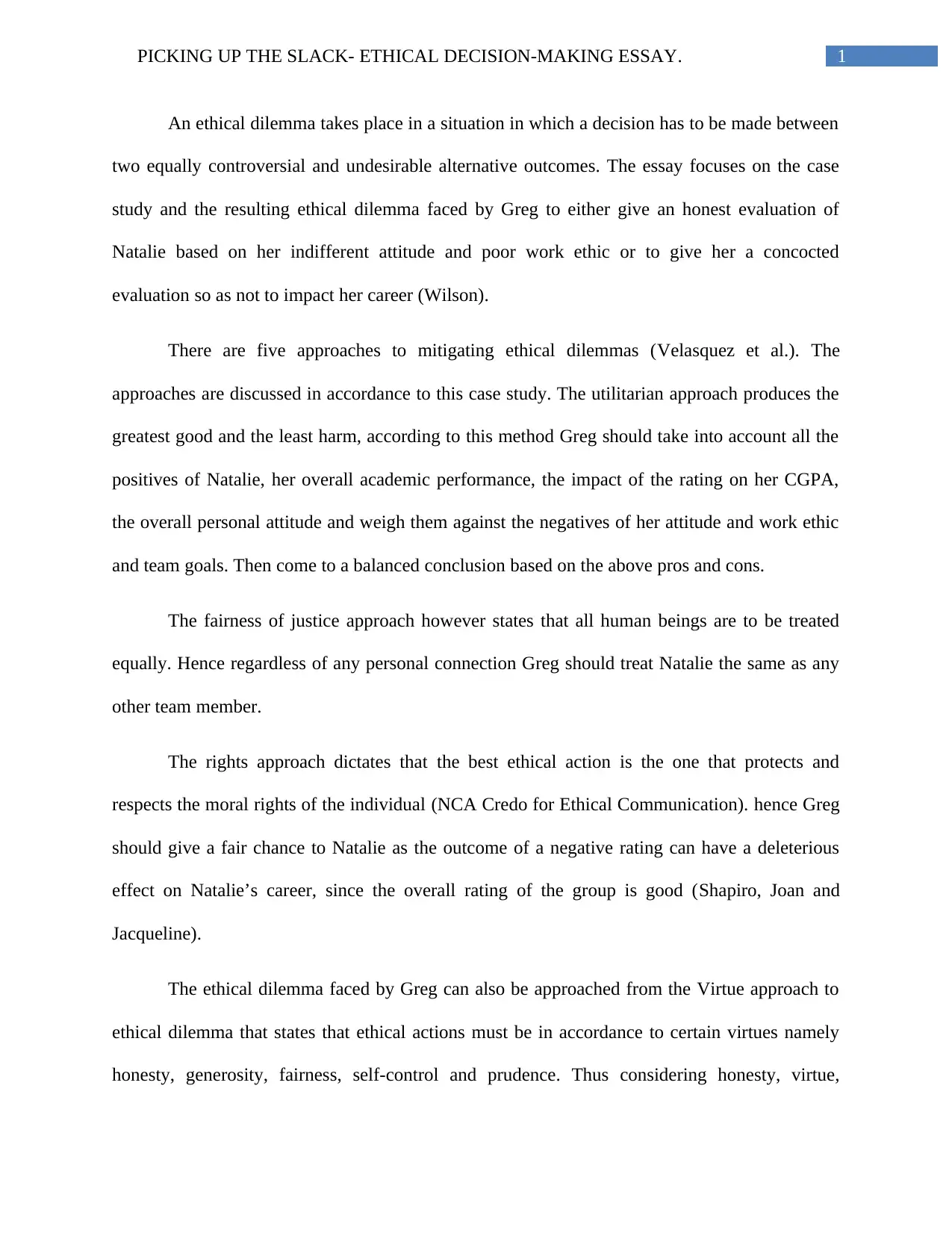
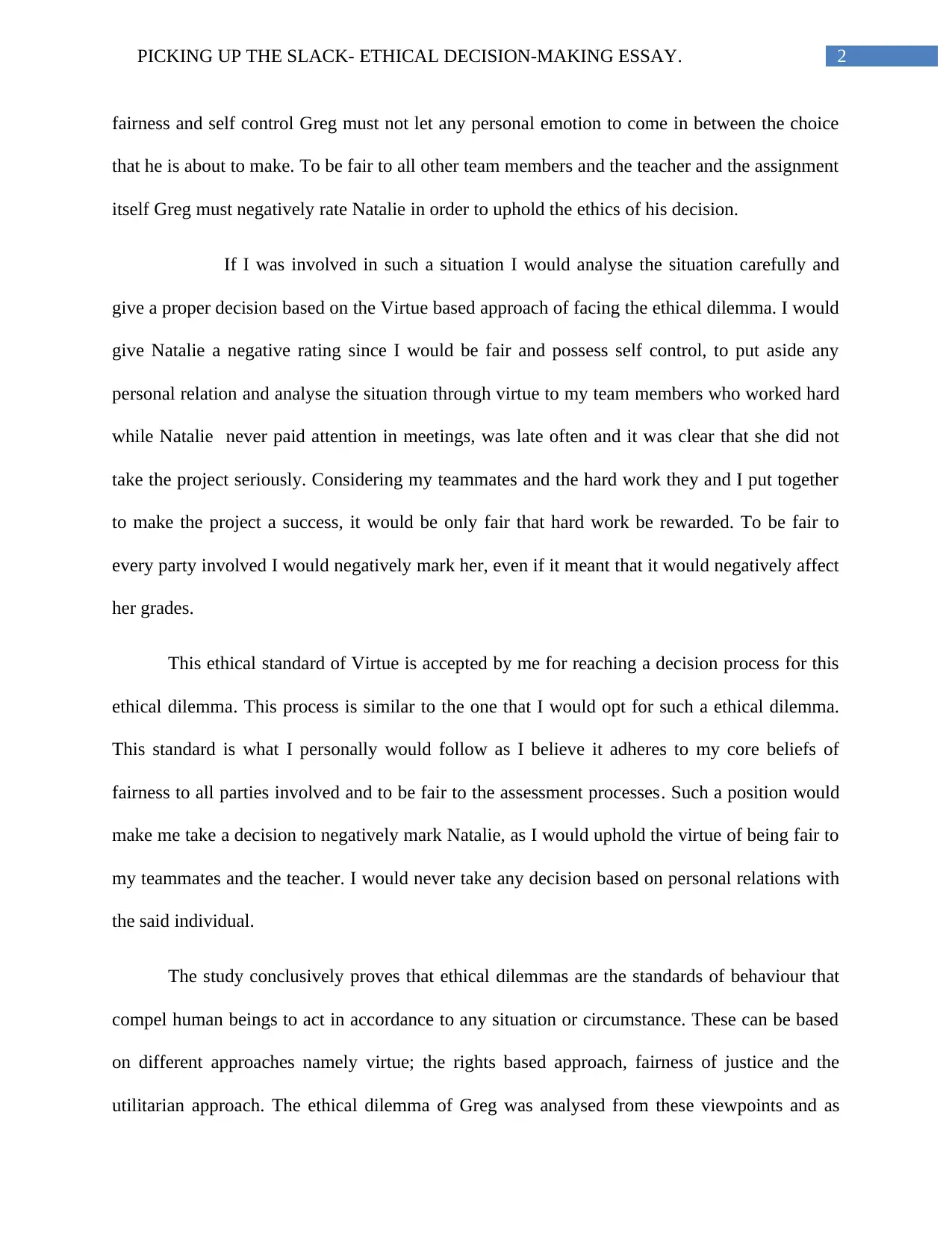

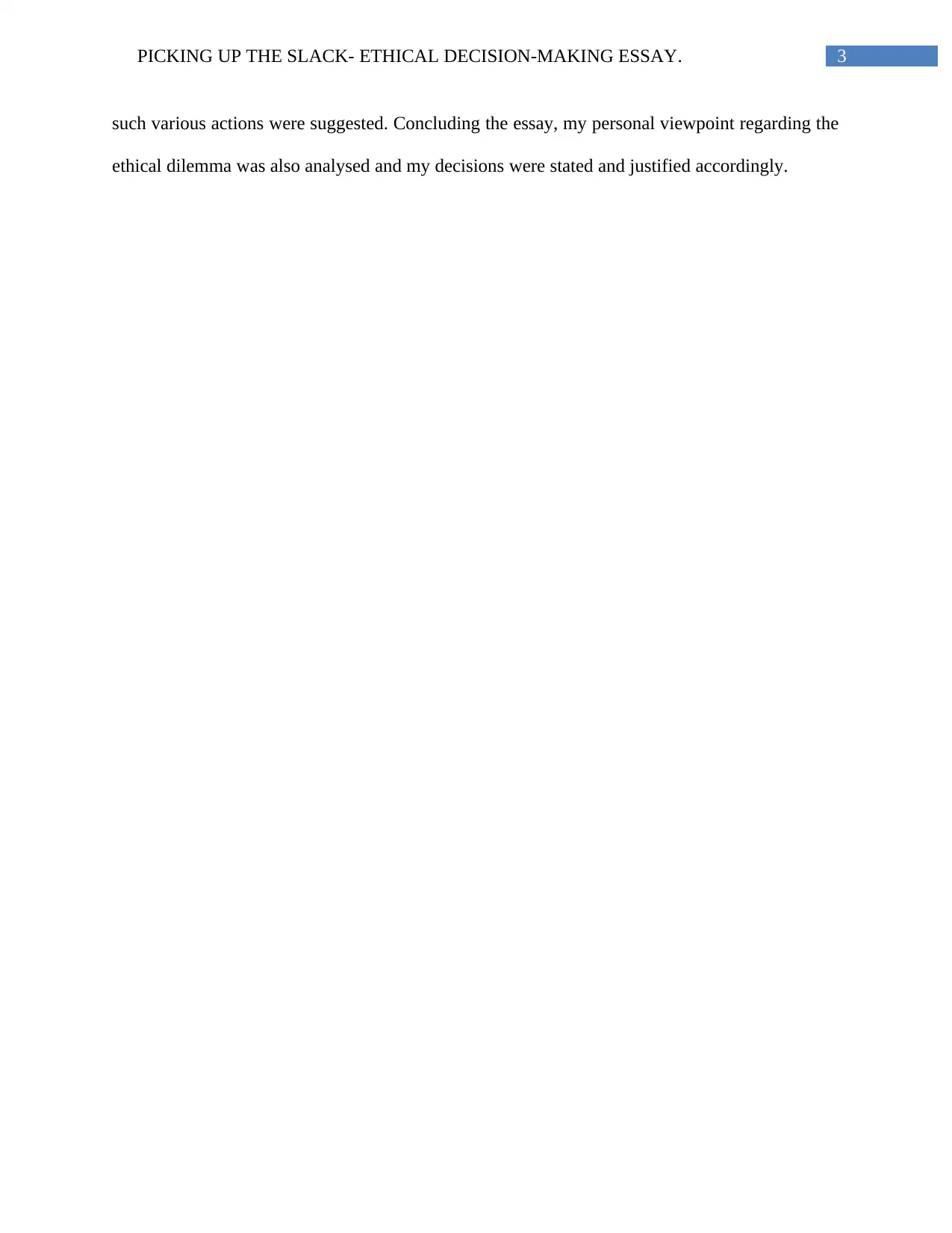
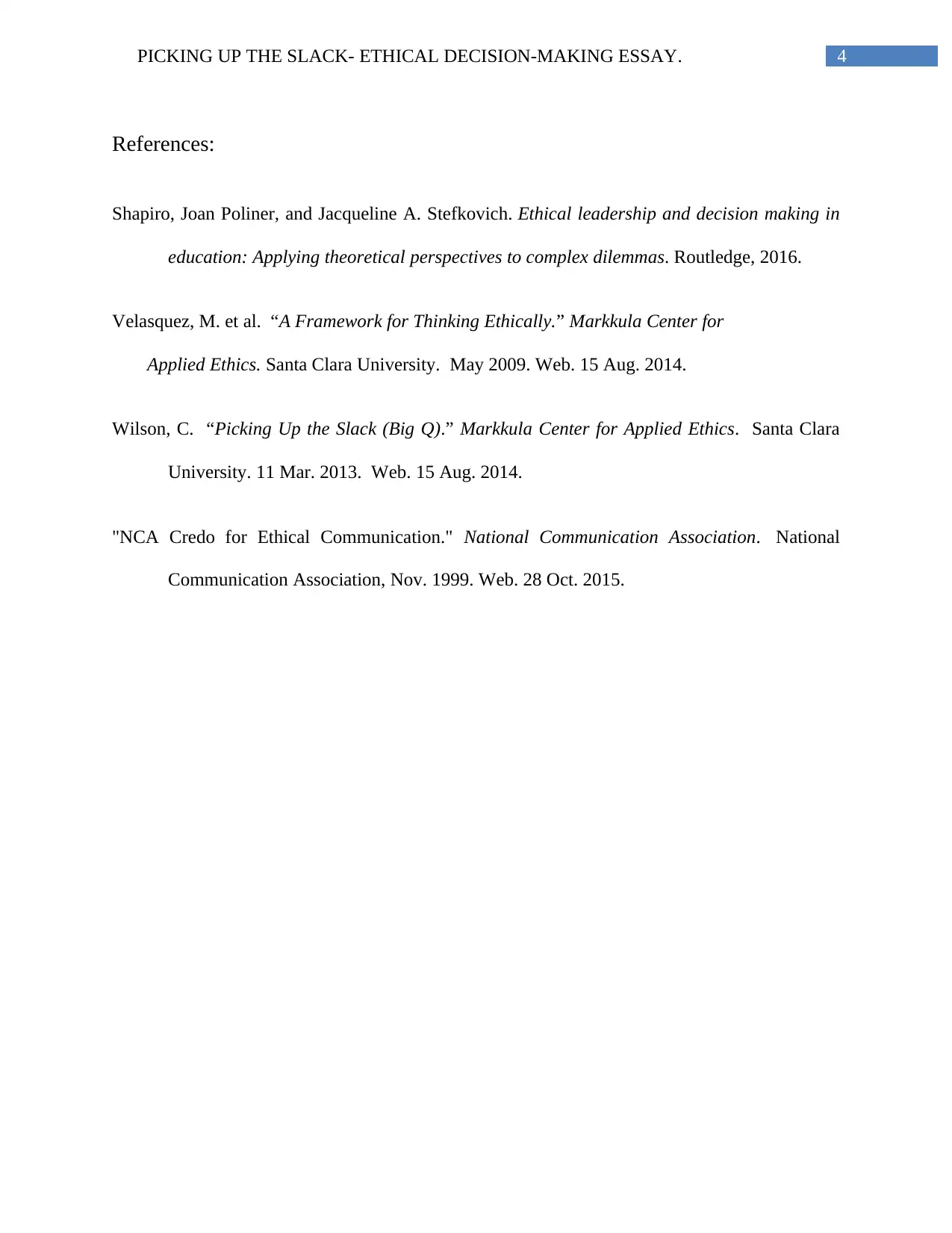






![[object Object]](/_next/static/media/star-bottom.7253800d.svg)